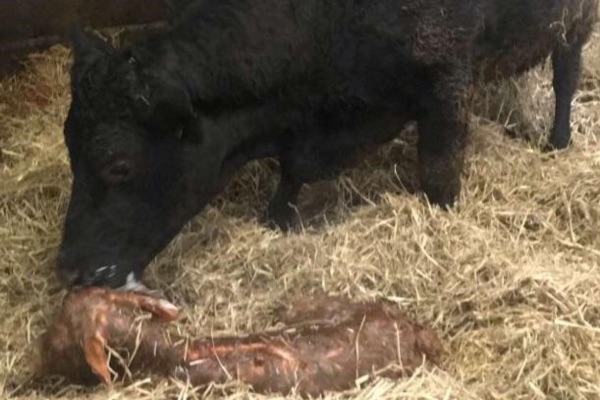“A calving gate is the single most important piece of equipment on a suckler or dairy farm,” one farm vet has told That’s Farming.
The vet explained to editor, Catherina Cunnane, that calving gates are becoming more popular on farms in recent years, and they are no longer viewed as “a luxury item” on a specialised pedigree enterprise.
They commented: “A calving gate is a win-win all around as it leaves everything safer and more stress-free for the farmer, vet (if required) and the cow.”
“Farm safety concerns, vet demands, and animal behaviour are among the possible factors driving increased demand for calving gates.”
“Some vets will charge an additional fee often in the region of circa €50-€100 for having to perform a C-section on a cow on a farm without a calving gate.”
The practitioner highlighted that vets and/or farmers could sustain injuries if adequate facilities are unavailable when calving cows.
Calving gate
A specific-purpose heavy-duty calving gate, they explained, can easily stall/immobilise a cow or a heifer in a safe position for calving.
The vet explained: “When designing calving pens, ideally, allow ease of access to the lefthand side of the cow which is paramount in cases when a C-section may be required, or you have to operate a calving jack.”
“In a lot of cases, calving gates have been hung incorrectly by not allowing ease of access to the cow’s left-hand side, so farmers should be aware of this when considering calving pen layouts.”
“There are some calving gates designed for use to hang between two cubicles, which allows you to operate it from both sides. The main thing is to have features that you can quickly disassemble if a cow or heifer goes down.”
“Some common pitfalls are poorly designed, poorly maintained and poorly positioned calving gates.”
“Some farmers place their calving gates against another gate, while some place them up against a wall, but the latter often, if not designed correctly, can make operating your calving aid/jack a more difficult process than it should be due to a lack of space.”
Rope instead of a chain
Moreover, the farm vet also advised attaching a rope at the back of the gate, which you can cut easily if a cow or heifer goes down, instead of a chain.
The vet continued: “It is a lot easier to cut a rope than attempting to remove a chain, especially when an animal is forcing all or part of their weight against it.”
Also, the vet highlighted the need to have an adjustable quick-access headlock with a fast-release mechanism, which enables you to release a cow’s or heifer’s head immediately with ease when required.
“There also should be a feature, possibly in the form of a specifically designed middle gate, to allow the calf to suckle. Often, removable bars allow for this and also to perform a C-section.”
“Preferably, your calving gate should be made from galvanise to enable you to easily power-wash with any broad-spectrum farm disinfectant.”
“Some calving gates are fixed, and others are adjustable and/or foldable, so shop around for the best option for your farm. Remember there is nothing more dangerous than a cow at calving.”
“The key take-home message for farmers is simply to buy a calving gate. It is a relatively inexpensive investment at circa €500-€700 (some with additional enhanced features can cost up to €1,100) that can save you time, money, effort, energy and possibly a life.”
“If you save just one calf you have your calving gate paid for, so make the investment this calving season,” the vet concluded.
Previous article on That’s Farming:





